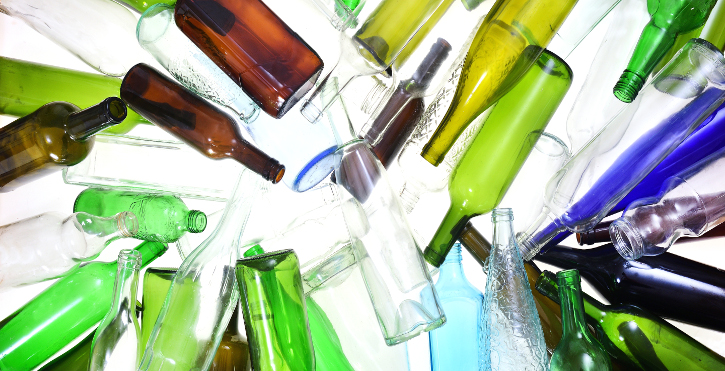In the world of wine there are customs that we sometimes accept without stopping to think about their origin or reason. If we look at the archetypal image of the wine bottle, the archetypal image of the wine bottle is a glass bottle, green in most cases, which has been drifting nowadays to darker greens and browns. But where does this practice come from, why are bottles made in these colors and not in others?
The truth is that there is no single reason, but rather a combination of several. Apparently, its origin lies in the fact that in the past, glass processing techniques were not as perfected as they are today. In fact, it was not known how to purify and filter the impurities from the glass, and these impurities stained the bottles with an amber and cloudy color. Specifically, the green hue of the bottles was a casual result caused by the smoke emitted from the peat charcoal used to fuel the furnaces of the glassworks. In this smoke were particles of ferrous iron oxide that produced that dark green hue so characteristic of wine bottles.
Later, however, practice led to the conclusion that the dark shades of the bottles helped the wine to keep longer. Wine is a delicate beverage that can be affected by factors such as the action of ultraviolet radiation. The dark shades of the bottles protect the liquid from direct light and allow it to keep better and longer. This is not trivial, since it is estimated that the dark green glass characteristic of wine bottles is capable of filtering between 30 and 60 percent of ultraviolet radiation. As a curiosity, amber-colored bottles are the best in this aspect, as they retain approximately 90% of the radiation.
Although today glass can be tinted in any color, the standard of green and dark amber is maintained for economic reasons. Green glass is cheaper on the market, but if you want to remove the ferrous oxide impurities you would have to work the glass more finely, which makes it more expensive.
In short, the choice of the dark color of the bottles, as we have seen, makes a wine better preserved, although there are also aesthetic and economic issues that influence the choice of the wineries.
As mentioned above, wine is a very sensitive product that continues to evolve inside the bottle until the moment it is consumed, so taking care of details such as the color and tone of the bottles can be essential to ensure its proper preservation.




